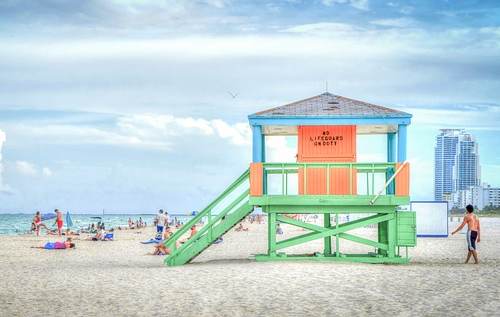In the final quarter of 2019 Florida’s primary insurance carriers continued to add to their ultimate net losses from 2017’s hurricane Irma, demonstrating that the loss creep continued more than two years after the catastrophe event.
 But these carriers are all too aware of the assistance that their reinsurance panels have provided to them.
But these carriers are all too aware of the assistance that their reinsurance panels have provided to them.
While much of the most recent hurricane Irma loss creep has flowed to the Florida Hurricane Catastrophe Fund (FHCF), some reinsurance providers may still be on the hook for a level of creep, perhaps through quota shares or similar arrangements where they take a proportional share of losses.
Hurricane Irma continues to develop and at some carriers that has not yet stopped, with claims remaining open, other claims being reopened and legal action continuing to drive loss expenses higher.
FedNat CEO Mike Braun was particularly complimentary of the support his firm’s reinsurance panel have provided.
“The reinsurers have really stepped up for us with these storms, primarily Irma and Michael, and they paid a lot of losses,” he explained.
Braun noted that his company has been paying more for its catastrophe reinsurance protection as a result.
“I believe they got a substantial rate increase in the market, both from us and from others in 2019.
“We’re currently working through an $8 million per quarter increase in our reinsurance spend, so I believe pricing to be more reasonable in the reinsurance space,” he said.
On loss creep, Braun said that FedNat has continued to experience it from both of Florida’s major hurricanes of recent years, Irma and Michael.
“We have taken development unfortunately multiple times and I don’t think that’s anything unique just to FedNat. On Irma and Michael, the whole industry has taken development on those as well.
“For Irma, FNIC (FedNat Insurance Company) we moved it up to $820 million, for MNIC (Monarch National) it’s now at $47.5 million, and then Michael went up $25 million to $475 million,” Braun continued.
Braun also said that he expects a spike in further first loss notices from hurricane Irma as the three-year statute on filing new claims draws nearer.
Braun explained that FedNat sees increasing marketing efforts from those driving assignment of benefit (AOB) claims, which is perhaps a warning that this loss creep for the Florida carriers is not yet over and could accelerate in weeks to come.
Universal Insurance Holdings CEO Jon Springer also noted continued loss creep in his firm’s recent quarterly earnings call.
“On Hurricane Irma, we started the quarter with just under 2,000 claims remaining open and by year-end, that number was down to 800. We increased the ultimate to $1.4 billion at year-end. As a reminder, from a net exposure standpoint, at this point in the life cycle of Hurricane Irma, the vast majority of this increase in ultimate is covered by the Florida hurricane catastrophe fund,” he explained.
Springer too believes that there could be a flurry of additional claims and first loss notices to deal with in the next few months as the three-year claims filing date nears.
Springer said, “We’ve reviewed our historical events and do anticipate that there could be an increase as we approach that statute of limitations. It remains to be seen how much of a run-up that will be. But that is definitely be a possibility.”
One comforting point from Springer though is that most of Universal’s continued development on hurricane Irma is due to increasing ultimate losses, not added loss adjustment expense, which could suggest things are at least settling on that front.
Even if claims do accelerate again from Irma, Springer believes that Universal will not have to retain too much more loss, as the firms open market reinsurance should respond to absorb it.
“If the situation does present itself where we will need to retain some of the losses beyond our open market coverage, it will be a relatively small percentage of the loss as the loss grows beyond the $1.4 billion that we’ve booked to-date,” he said.
Hurricane Irma continues to drive claims into Florida carriers, with ramifications for their reinsurance partners in some cases.
What’s important though, at this stage of the year, is getting closer to a final view of the ultimates these carriers will face well in advance of June, to enable reinsurers and ILS funds to price on a more-informed basis.
Hence, those Florida carriers that got out early this year and have already placed significant chunks of their reinsurance programs by this stage, may find that was a shrewd move, as any further Irma creep could have driven the need for rate higher among reinsurance capacity providers.
 View all of our Artemis Live video interviews and subscribe to our podcast.
View all of our Artemis Live video interviews and subscribe to our podcast.
All of our Artemis Live insurance-linked securities (ILS), catastrophe bonds and reinsurance video content and video interviews can be accessed online.
Our Artemis Live podcast can be subscribed to using the typical podcast services providers, including Apple, Google, Spotify and more.































